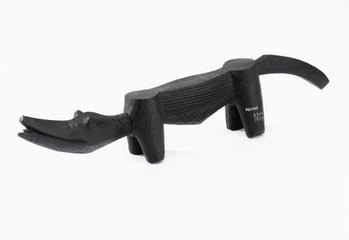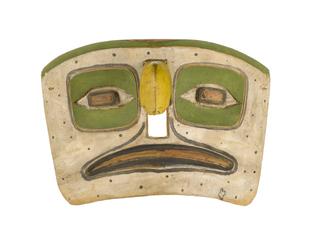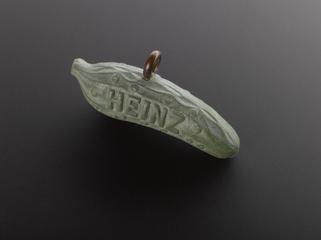

Hollow hand and forearm, grasping a sprig of rue, protects against the Evil Eye, from Naples, Italian, 1800-1850
According to Pliny, a first century CE philosopher, rue or the ‘herb of grace’ was the cure for 84 different illnesses. The herb was mainly employed as a protector of children, childbirth and fertility. Rue was also believed to give protection against the ‘evil eye’. In holding the rue, the hand (in the foreground) assumes the fig or mano fica gesture which was also used to ward off the evil eye, the widespread belief that some people can cause harm to others simply by looking at them in a certain way. This ‘look’ may be given deliberately, in an attempt to cause harm, or accidentally, perhaps because of feelings of envy. The harm may take the form of bad luck, illness or death.
The amulet is pictured here with similar bone (A665892) and coral (A665906) examples.
Details
- Category:
- Ethnography and Folk Medicine
- Collection:
- Sir Henry Wellcome's Museum Collection
- Object Number:
- A665908
- Materials:
- alloy
- Measurements:
-
overall: 11 mm x 64 mm x 27 mm, .006 kg
- type:
- amulet
- credit:
- Loan. Wellcome Trust




